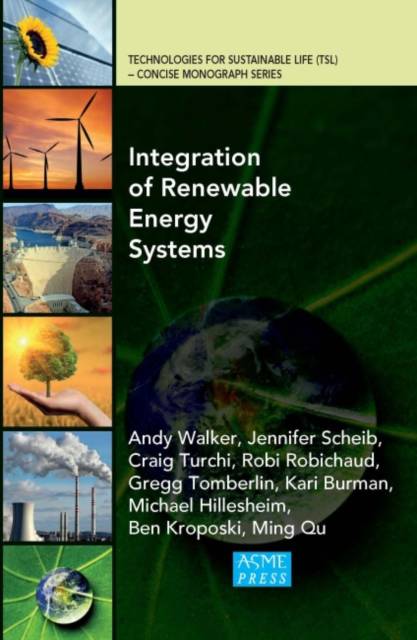
- Afhalen na 1 uur in een winkel met voorraad
- Gratis thuislevering in België vanaf € 30
- Ruim aanbod met 7 miljoen producten
- Afhalen na 1 uur in een winkel met voorraad
- Gratis thuislevering in België vanaf € 30
- Ruim aanbod met 7 miljoen producten
Omschrijving
Energy efficiency measures are generally less expensive than a renewable
energy (RE) system to provide the same amount of energy saved. The
Energy Information Administration reports that, on average, a dollar
spent on efficiency saves $2 off the cost of a renewable energy system
to provide the same amount of energy [IEA, 2011]. But as the saying
goes "you can't save yourself rich" and having installed sophisticated controls
and efficient systems, we need some source of energy to power
them. On-site renewable energy systems offer several advantages, especially
when operated in concert with a larger utility system. The main
reasons to consider RE is cost-effectiveness, but other reasons are as
diverse as: reduction of atmospheric emissions; compliance with regulations
requiring RE; enhanced reliability through redundant energy supply;
abate risks related to fuel availability and cost, or risk of fuel-spills
during delivery; score points in a sustainability rating; or as a mitigation
measure in a larger environmental-permitting process. Renewable
energy technologies used on buildings include daylighting; solar photovoltaics;
solar water heating; solar ventilation air preheating; passive
solar heating and cooling load avoidance; wind power; biomass heat (or
cogeneration as discussed in Chapter 8); anaerobic digestion of waste;
and geothermal heat. Ground source heat pumps are also often considered,
in-part, RE systems. Daylighting and the envelope measures
(passive heating and cooling) are often considered efficiency measures,
but daylighting is a direct and obvious use of solar energy in buildings,
and photovoltaics (PV), Solar Water Heating and Solar Ventilation
Air preheating are technologies to consider on any building project. We
even consider an example of hydroelectric power on the water supply to
a building.
We cover the operating principle of each type of system, list components
and provide schematic diagram of how components are assembled
into systems; provide information for cost estimate and life cycle cost
calculation, describe how system size may be optimized to minimize life
cycle cost, and we stress the importance of operations and maintenance
(O&M) over a long performance period. Significant emphasis is placed on
integration of RE into the conventional utility system, at both the
site level and from the perspective of the larger utility system, so that
savings due to the RE may be realized without compromising the reliability
of the system. Case studies are presented to exemplify application
of each technology.
Specificaties
Betrokkenen
- Auteur(s):
- Uitgeverij:
Inhoud
- Aantal bladzijden:
- 156
- Taal:
- Engels
- Reeks:
Eigenschappen
- Productcode (EAN):
- 9780791861240
- Verschijningsdatum:
- 18/07/2016
- Uitvoering:
- Hardcover
- Formaat:
- Genaaid
- Afmetingen:
- 152 mm x 231 mm
- Gewicht:
- 498 g

Alleen bij Standaard Boekhandel
Beoordelingen
We publiceren alleen reviews die voldoen aan de voorwaarden voor reviews. Bekijk onze voorwaarden voor reviews.









